Masashi IWASAKI

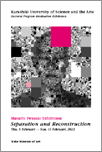
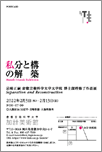
solo show
"SEPARATION & RECONSTRUCTION"
FEB 3 - FEB 13, 2022
Kurashiki University of Science and the Arts Kake Museum of Art, Okayama
個展
“セパレーション・アンド・リコンストラクション”
2022年2月3日−2月13日
倉敷芸術科学大学・加計美術館,岡山





"DIGITAL SELF-PORTRAITS" KURASHIKI UNIVERSITY OF SCIENCE & THE ARTS GRADUATE SCHOOL OF ART PHD THESIS ABSTRACT, FEBRUARY 10, 2022
 aking various kinds of artworks using computer graphics since the 1980's, I have become strongly interested in exploring "The uniqueness of digital art". For my future activity to be fruitful, I decided to take the doctoral course as an opportunity to reflect on my own works to be newly aware of the underlying intentions as well as to further examine materials to be used, concepts to be loaded and results to be realized. Setting "Self-portraits" as the theme, with the aim of creating a new kind of self-portraiture, which enables an artist's sense of self and a real sense of life to be imprinted on through computer graphics, this research paper explains my actual practices from self-reflection and conception to production process including how to reconstruct the self.
aking various kinds of artworks using computer graphics since the 1980's, I have become strongly interested in exploring "The uniqueness of digital art". For my future activity to be fruitful, I decided to take the doctoral course as an opportunity to reflect on my own works to be newly aware of the underlying intentions as well as to further examine materials to be used, concepts to be loaded and results to be realized. Setting "Self-portraits" as the theme, with the aim of creating a new kind of self-portraiture, which enables an artist's sense of self and a real sense of life to be imprinted on through computer graphics, this research paper explains my actual practices from self-reflection and conception to production process including how to reconstruct the self.

The first chapter overviews self-portraitures found in paintings, sculptures and photographs to look into what people have made self-portraits for all through the ages from the two points of view: "self-observation" and "self-revelation". In addition, it defines what it is for me to create self-portraits, while tracing the advent of new media ideal for them chronologically from mirrors to computer graphics through photography, which was invented in the 19th century and opened up a new horizon for self-portraiture.


The second chapter makes a general survey of the sphere of portraits, focusing on a shift in the purpose of production which occurred in portrait painting and a change of signification which occurred with the invention of photography in the 19th century, as well as the representations characteristic of each medium. Furthermore, with an eye on the universal theme of "Who am I?", it also reflects on today's digital portraits in terms of the reasons for their rise and the meaning of their presence while clarifying the motives and concepts behind my own in parallel.


The third chapter, in light of the study results presented in the two forgoing chapters, goes into details about my very own digital self-portraits based on such elements as "form", "color", "composition" and "time and space expression", inspired by various kinds of artworks from all ages and cultures, including but not limited to portraits and self-portraits, in order to illustrate the differences and affinities between the analog and digital techniques as well as their respective originalities. Besides, referring to diverse theories and thoughts from art to science, from religion to philosophy in an interdisciplinary way and compared to the said inspirational pieces, it investigates my own self-portraits themselves, which embody my own physicality, concerning their conceptions and production processes. Finally, the fourth chapter provides details on my doctoral graduation work named "Abyss", from the intent and purpose of the realization to the process of decomposing and reconstructing my self, reaching a definitive conclusion that for me, an attempt to reconstruct even my digital self-portraiture itself is all about seeking a sense of being alive, which has been increasingly becoming difficult to feel in this information society today, thereby regaining a sense of physicality, which should be the most crucial for everyone as a human being.


I have deliberated on an innate desire of expressing their individuality proper to humankind so far. Acquired through the realization of the graduate work, the "Reconstruction of self-portraiture with computer graphics" reveals a new form of self-expression based on a new way of self-recognition. In the current digital networked environment, there are an infinite number of "artworks" posted, viewed and circulated, of which the representations seem a little bit too naive and private. The digital self-portraiture, which exactly constitutes the core of the research and realization, could play a more significant role in the information age and provide a guide for self-confrontation while raising such questions as what individuality is or what the individual self is, which should invite people to further explorations - what a human is, and then, what art is.
(Masashi IWASAKI)
“デジタルセルフポートレイト” 倉敷芸術科学大学大学院・博士学位論文要旨,2022.02.10
 は1980年代より今日まで、コンピュータ・グラフィックスの技術を用い、様々なアート作品を制作してきた。その過程で「デジタル造形の固有性」に強く関心を持つことになった。作家活動を続けるにあたり、自身のコンピュータ・グラフィックス・アートは何を生もうとしているのか、固有のマテリアルとは何か、込めるべきコンセプトとは何かを改めて再考し、どのようなアート作品に結実させることが可能か制作研究を進めていく。考察の過程で、研究テーマを「自画像」と定め、自己の存在そのものが、さらには人間の生命感が、コンピュータ・グラフィックスによって、新しい芸術作品として定着されることを目指し、その思索、制作の過程や、分解、再構築の方法について論じていく。
は1980年代より今日まで、コンピュータ・グラフィックスの技術を用い、様々なアート作品を制作してきた。その過程で「デジタル造形の固有性」に強く関心を持つことになった。作家活動を続けるにあたり、自身のコンピュータ・グラフィックス・アートは何を生もうとしているのか、固有のマテリアルとは何か、込めるべきコンセプトとは何かを改めて再考し、どのようなアート作品に結実させることが可能か制作研究を進めていく。考察の過程で、研究テーマを「自画像」と定め、自己の存在そのものが、さらには人間の生命感が、コンピュータ・グラフィックスによって、新しい芸術作品として定着されることを目指し、その思索、制作の過程や、分解、再構築の方法について論じていく。

 は1980年代より今日まで、コンピュータ・グラフィックスの技術を用い、様々なアート作品を制作してきた。その過程で「デジタル造形の固有性」に強く関心を持つことになった。作家活動を続けるにあたり、自身のコンピュータ・グラフィックス・アートは何を生もうとしているのか、固有のマテリアルとは何か、込めるべきコンセプトとは何かを改めて再考し、どのようなアート作品に結実させることが可能か制作研究を進めていく。考察の過程で、研究テーマを「自画像」と定め、自己の存在そのものが、さらには人間の生命感が、コンピュータ・グラフィックスによって、新しい芸術作品として定着されることを目指し、その思索、制作の過程や、分解、再構築の方法について論じていく。
は1980年代より今日まで、コンピュータ・グラフィックスの技術を用い、様々なアート作品を制作してきた。その過程で「デジタル造形の固有性」に強く関心を持つことになった。作家活動を続けるにあたり、自身のコンピュータ・グラフィックス・アートは何を生もうとしているのか、固有のマテリアルとは何か、込めるべきコンセプトとは何かを改めて再考し、どのようなアート作品に結実させることが可能か制作研究を進めていく。考察の過程で、研究テーマを「自画像」と定め、自己の存在そのものが、さらには人間の生命感が、コンピュータ・グラフィックスによって、新しい芸術作品として定着されることを目指し、その思索、制作の過程や、分解、再構築の方法について論じていく。

第1章では、絵画、彫刻、写真における自画像を概観し、なぜ人は自らの肖像を描いてきたかを、「観察」と「表現」の二つの側面から論じる。さらに、19世紀の写真術の発明によって新たなセルフポートレイトが登場し、「鏡」「写真」「コンピュータ・グラフィックス」へというメディアの変遷を通観しながら、自身にとってのセルフポートレイトとは何であるかを追求する。


第2章では、広くポートレイトの全般を振り返りながら、絵画における肖像画の変容、19世紀の写真術の登場により変化するポートレイトの意味や、メディアを横断するポートレイトの表現を考察する。さらには「私」とは何かという普遍的なテーマを視野に入れながら、現代のデジタル化されたセルフポートレイトの発生理由や存在意義を分析し、再び自身のデジタルセルフポートレイト作成における動機やコンセプトなど、制作研究の足場を明確にしていく。


第3章では、前章までの考察に基づき、具体的に自作のコンピュータ・グラフィックス・アート諸要素の「形態」「色彩」「構成」「時間表現」「空間表現」について、古今東西に顕われた先行例に倣いながら、アナログとデジタルとの差異や共通項そして独自性を探求する。それぞれの要素において、芸術から科学まで、また宗教から哲学までを参照し、自らの身体性が導入された自画像作品と対照させながら、その表現コンセプトや制作プロセスを解説する。第4章においては、修了制作作品「アビス」完成までの、分解から再構築に至る目的や方法の詳細を提示しながら、自身にとってデジタルセルフポートレイトを再構築することが、情報化された世界の中で失われつつある生のリアリティを追求し、本来人間として欠くことのできない身体性を取り戻す行為に他ならないと結論づけていく。


いつの時代も個を顕現化させようとしてきた人の普遍的な希求心を明確化しようと、考察を重ねてきた。今回のコンピュータ・グラフィックスによる「新しい自画像の再構築」は、新たな自己表現の有り様を提示すると共に、その自己認識の方法を社会に問うものとなる。現代の情報ネットワークという環境の下、極めて私的な自己表現をした「作品」が無数に発信され享受されている。本研究の主題であるデジタルセルフポートレイトの意義、それは情報化した世界の中でむしろ重要度を増し、個や私とは何かを問い、自己との対峙の方法に一つの指針を与えるものとなるはずである。それはとりもなおさず、人間そして芸術とは何かを探求することへと繋がるものだと確信する。
(岩崎正嗣)
Photograph: Kyogo MATSUMOTO
写真:松本恭吾

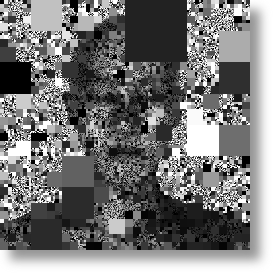

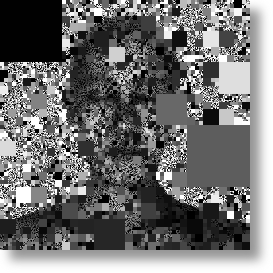
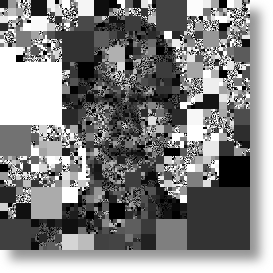
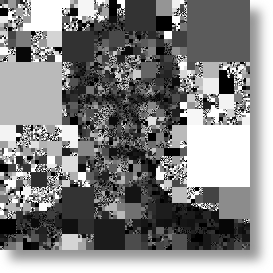
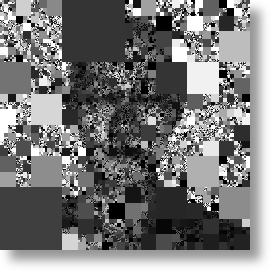
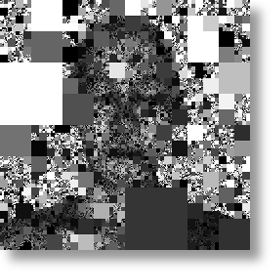
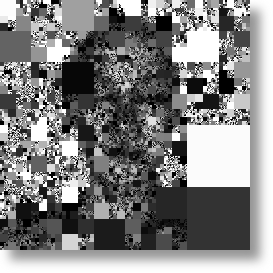
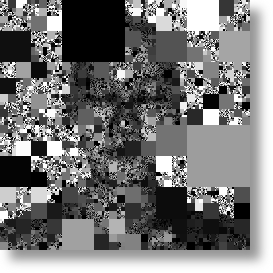
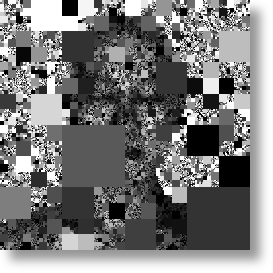


"PXS" 1999-2022
digital photography | silver digital plate, aluminium frame
every piece 43 x 35 cm
“PXS” 1999-2022
デジタル・フォトグラフィ|シルバーデジタルプレート,アルミフレーム
すべて 43 x 35 cm
"PXS" 1999-2022
digital photography | inkjet print, aluminium dibond plate
every piece 73 x 73 cm
“PXS” 1999-2022
デジタル・フォトグラフィ|インクジェットプリント,アルミ複合板
すべて 73 x 73 cm





"SEPARATION & RECONSTRUCTION" 1999
digital photography
every piece dimension variable
“セパレーション・アンド・リコンストラクション” 1999
デジタル・フォトグラフィ
すべてサイズ可変

写真:松本恭吾













"PXS" 1999-2022
digital photography | silver digital plate, aluminium frame
every piece 43 x 35 cm
“PXS” 1999-2022
デジタル・フォトグラフィ|シルバーデジタルプレート,アルミフレーム
すべて 43 x 35 cm
"PXS" 1999-2022
digital photography | inkjet print, aluminium dibond plate
every piece 73 x 73 cm
“PXS” 1999-2022
デジタル・フォトグラフィ|インクジェットプリント,アルミ複合板
すべて 73 x 73 cm





"SEPARATION & RECONSTRUCTION" 1999
digital photography
every piece dimension variable
“セパレーション・アンド・リコンストラクション” 1999
デジタル・フォトグラフィ
すべてサイズ可変

